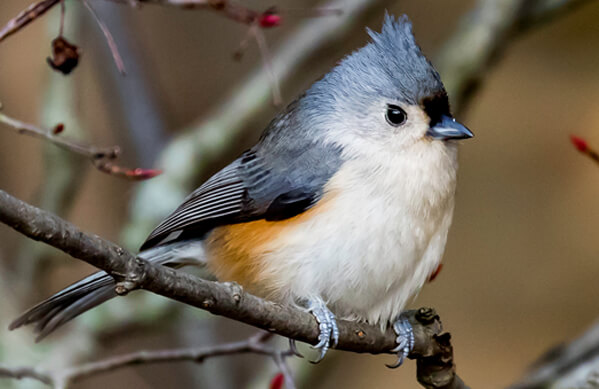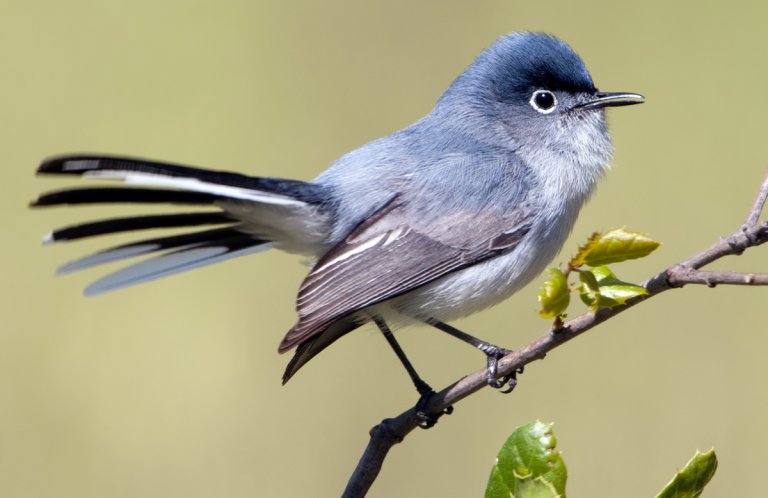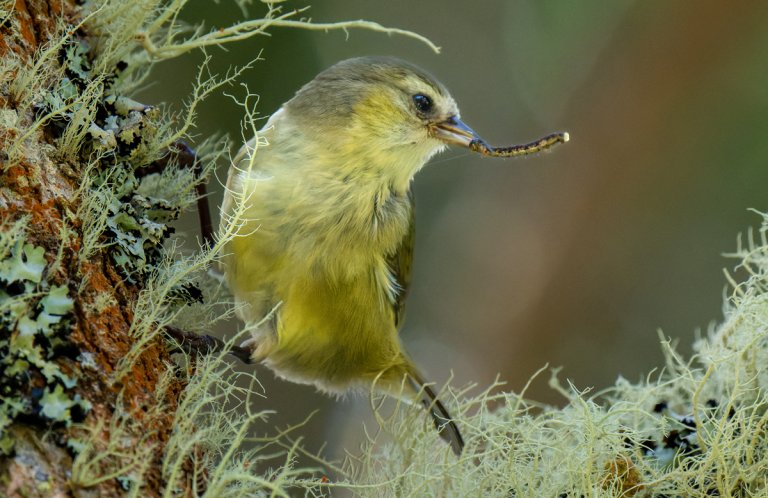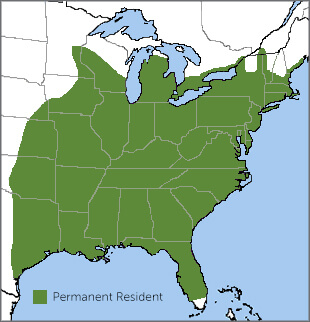
Tufted Titmouse range map by NatureServe
The active and agile Tufted Titmouse is easily recognized by its jaunty crest of gray feathers, big black eyes, and rust-colored flanks. This familiar bird feeder visitor often joins mixed foraging flocks with other common backyard birds such as the White-breasted Nuthatch and Black-capped Chickadee.
More Than a Mouse
The Tufted Titmouse's name derives from the Old English words "tit" and "mase," basically meaning "small bird." The word "mase" eventually became obsolete and this part of the name morphed into the familiar word "mouse," a convenient switch because the quick-moving little gray bird probably reminded people of the small rodent.
The Tufted Titmouse's genus name Baeolophus hails from two Greek words for "small" and "crest." All five titmice species in this genus are found only in North America.
Expanding Range
Once thought of as a southern species, the Tufted Titmouse has steadily expanded its range northward. At the start of the 20th century, this species was found only as far north as New Jersey and Iowa. Today, it reaches southern Quebec and Ontario. Researchers think this expansion is likely due to warming winters, an increase in winter bird-feeding, and large areas of maturing woodland.
The Tufted Titmouse is a sedentary (nonmigratory) species, and mated pairs stay together on territory throughout the year. Young birds may disperse short to medium distances in search of new territories.
The Black-crested Titmouse, found in mesquite shrub in Texas, southern Oklahoma, and northeastern Mexico, was once considered a Tufted Titmouse subspecies, but the two were split into separate species in 2002, based on differences in ecology, physiology, and song. The Tufted Titmouse and Black-crested Titmouse hybridize where their ranges meet in central Texas and southern Oklahoma.
Like others in its family, such as the Black-capped Chickadee, the Tufted Titmouse is very vocal, employing a variety of calls to keep in contact with its family group, defend its territory, and warn against predators. During the spring and summer, it sings a sweet, repeated peter-peter-peter song. Listen here:
Audio credits: Jim Berry, XC407931. Accessible at www.xeno-canto.org/407931. Paul Marvin, XC145941. Accessible at www.xeno-canto.org/145941. Antonio Xeira, XC311712. Accessible at www.xeno-canto.org/311712.
Acrobatic Omnivore
The Tufted Titmouse has a varied diet that includes insects, spiders, seeds, fruits, and suet. It employs different feeding techniques to secure its meals, including hanging upside-down as it forages on branches, and hammering away at a seed or acorn held between its strong feet. Like the Red-headed Woodpecker and other titmice and chickadees, the Tufted Titmouse caches seeds throughout its territory during the fall and winter.
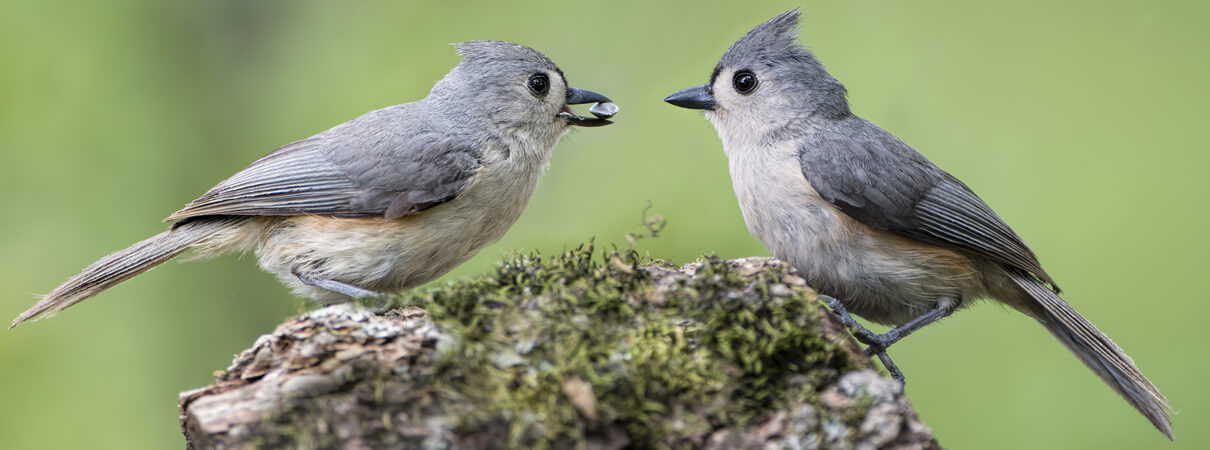
Tufted Titmice by Bonnie Taylor Barry, Shutterstock
Nesting Neighbors
Unable to create its own nest cavity, the Tufted Titmouse depends on the excavating prowess of woodpeckers, such as the Hairy or Pileated Woodpecker, to provide suitable nesting spots. Tufted Titmice will also nest in natural cavities, knotholes, or nest boxes. The female builds the nest, a cup of twigs and grasses, within the nest cavity, lining it with shredded bark, feathers, and hair. Sometimes this hair is plucked directly off its owner, be it a raccoon, squirrel, rabbit, dog, or even a person!
Titmouse pairs often stay together for more than one breeding season and, unlike most related species, young Tufted Titmice often remain with their parents during the winter, not dispersing until later in their second year. Some immature Tufted Titmice even assist their parents in raising their next brood.
Outside of the breeding season, the Tufted Titmouse forages in mixed flocks with other small birds such as chickadees, nuthatches, woodpeckers, the Golden-crowned Kinglet, and the Brown Creeper. With its inquisitive, noisy nature, it often acts as the "sentry" for the flock, alerting the other species to potential predators.
Familiar Bird Facing All-Too-Familiar Threats
Like the adaptable Blue Jay and American Robin, the Tufted Titmouse thrives in forests, park-like settings, and even suburbs, as long as mature trees are present. Although it remains common, this bird faces the same threats as less-adaptable species, particularly predation by cats and collisions with glass.
ABC has a number of programs in place to reduce these threats, including our Cats Indoors program, which encourages pet owners to keep cats and birds safe, and our Glass Collisions program, which includes solutions to keep birds from hitting windows.
Donate to support ABC's conservation mission!





































